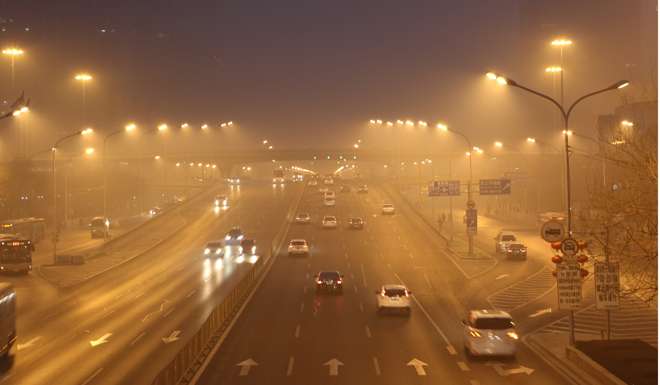
Satellites help monitor pollution around Beijing
Ground-based laser radar also part of remote-sensing system
China has built a remote-sensing network combining satellite readings and ground-based laser radar which a Beijing-based environmental scientist says could improve the accuracy of pollution readings around the capital.
Speaking at a recent air pollution conference, Dr Li Qian, from Beijing’s municipal Environmental Monitoring Centre, said the city now had remote-sensing devices connected to most of the mainland’s environmental satellites, Science and Technology Daily reported.
Much of northern and central China was engulfed by smog ahead of the Lunar New Year holiday and the level of harmful particulate matter in Beijing’s air on Saturday gave the capital its second-smoggiest start to a lunar year in five years.
Some local governments have been caught falsifying their environmental monitoring data in order to impress the central leadership now that efforts to protect the environment are included in officials’ performance assessments. In one widely reported case, environmental protection officials in Xian, Shanxi province, stuffed cotton gauze into sensors to improve air quality readings.
There have also been reports of traffic being diverted from roads near monitoring stations and trucks being sent to spray water on the same roads to improve air quality readings.
Science and Technology Daily quoted Li as saying the network could monitor atmospheric conditions including smog, particulate matter and pollution from space, while a ground-based laser radar could detect how pollution was distributed and spread.

She added that in addition to routine monitoring tasks, remote sensing could also detect the environmental impact of disasters such as the Tianjin port explosion in August 2015, with satellites used to monitor the spread of smoke and dust to the east and north after the blast.
Li added the network, which currently covered seven neighbouring provinces and cities in and around the Beijing-Tianjin-Hebei region, would be improved in coming years.
Professor He Kebin, from Tsinghua University, said real-time air pollution readings transmitted to satellites could not be falsified and could help to verify the accuracy of ground-based monitoring devices.
China pledged 10 billion yuan (HK$11.2 billion) to a smog-fighting fund in 2014, with the money distributed to nine provincial-level governments in the Beijing-Tianjin-Hebei region and the Yangtze and Pearl river deltas. But after an inspection in May last year, the Ministry of Finance published a report in December that named and shamed Anhui, Tianjin, Henan and Shanxi for embezzlement and misappropriation of funds ranging from several million yuan to hundreds of millions. Some counties in Anhui were found to have spent their funds on renovating government office buildings, digging new wells, buying transformers and even entertainment.

